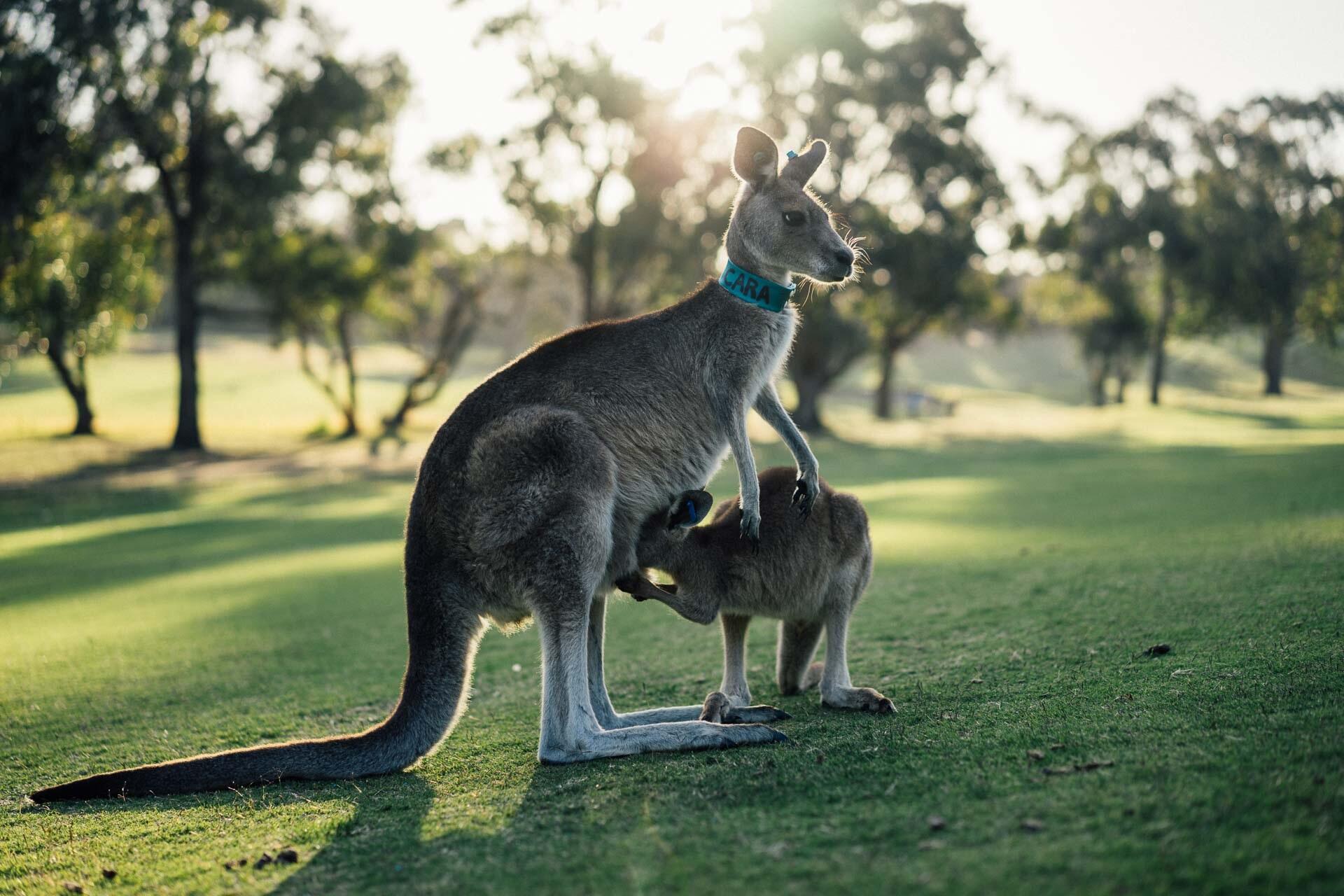Australia is a wild and wonderful place, full of strange and fantastic creatures you won’t find anywhere else! From jumping kangaroos to cute koalas hugging trees, the land down under is a thrilling adventure for anyone who loves animals.
Get ready to meet some of the most unique animals native to Australia!
Kangaroo
Kangaroos are iconic animals that hop around in Australia. They have large, strong tails that help them balance. Kangaroos can jump very far with their powerful legs. They have a pouch where the mommy kangaroo keeps her baby, called a joey.
Kangaroos eat plants and are active when it’s cool. Lots of people around the world know about kangaroos because they are very special. Kangaroos can be friendly but it’s important to remember they are wild animals.
Koala
Koalas are fuzzy animals that live in trees. They have big noses and look a bit like teddy bears but are not bears. Koalas eat leaves from the eucalyptus tree and sleep a lot. They are found in animals native to Australia and are very special to this place.
Koalas carry their babies, called joeys, in a pouch, like kangaroos. They don’t drink much water because they get most of it from leaves. People all over the world love koalas and come to Australia to see them. Koalas are animals native to Australia but can make loud noises at times.
Platypus
Platypus are endemic species, like nothing else. These animals are only in Australia. Platypus can lay eggs, which is weird for mammals. They have webbed feet and use them to swim in the water. At night, they go looking for food.
Platypus eat bugs and stuff from the bottom of rivers. Scientists are still discovering more about this weird animal. People love seeing platypuses in the wild because they are so unique. So, if you ever visit Australia, keep an eye out for it.
Wombat
Wombats are chubby and walk on four legs. They live in Australian dirt. Wombats have homes underground called burrows. They eat grass at night. Wombats have a hard backside. It helps them stay safe. People think wombats look cute.
But they can run fast if they need to. Wombats are very important in the Australian ecosystem and water for other animals. They are also protected by law, so if you see one in the wild, make sure to observe from a safe distance.
Tasmanian Devil
Tasmanian Devils live in Australian wildlife, but only on the island of Tasmania. They are small animals, but very strong. They have black fur and can make loud noises. People say they eat a lot, even dead things. During the night, they like to go out.
Because of sickness, there are few left, which is sad. They have babies, called joeys, that live in their mommy’s pouch. Lots of folks work hard to help them, so they don’t disappear. You can see Tasmanian Devils at some zoos in Australia.
Quokka
Quokkas are small and cute. They live on some small islands off Australia’s coast and a bit of mainland. Quokkas always seem like they are smiling. This makes many people like them a lot. They can hop very fast and eat plants.
Many people take photos with quokkas because they’re not usually scared. But it’s important to remember not to touch or feed them. Lots of folks work to keep quokkas safe so they don’t go away.
Echidna
Echidnas are cool animals. They have spikes like a porcupine. Echidnas can be found in Australia. They are not big, and they eat ants and bugs. Echidnas have long noses they use to find food. They lay eggs, even though they’re mammals.
Baby echidnas are called puggles, which is cute. Echidnas are shy and hide a lot. But you can sometimes see them when it’s cold or raining. They are important in the Australian ecosystem because they help control insect populations.
Unique Marine Life
Australia’s waters hide cool sea critters, stuff you won’t see in other places. First up, we’ve got the Great Barrier Reef, this huge underwater place full of bright corals and fish. Then there’s the Dugong, like a sea cow, munching on seagrass and chilling in the warm waters up north.
Heaps of them, gliding around like underwater birds, are sleek and scary for some. Where it’s super dark, outback creatures get freaky, stuff with lights on their heads and big, big eyes. It’s like another world down under the sea in Australia, full of weird and wonderful critters.
Dingo
Dingos are iconic animals. They live in Australia. Dingos have no home. They walk a lot. People see them but not always. They eat meat because they are hunters.
Dingos look like regular dogs, but they are not. They have brown fur and are good at hiding. A long time ago, aboriginal people had dingos as pets. But now, they are different because they’re wild animals.
Saltwater Crocodile
Saltwater Crocodiles are big and scary. They live in water places in Australia. They have big mouths with lots of sharp teeth. They can grab animals and eat them. People should not go near Saltwater Crocodiles.
They are very strong and can run fast for a short time. They lay eggs in the sand. Saltwater Crocodiles are very important, but you must be careful. If you ever see one, make sure to keep a safe distance and let the professionals handle them.
Cassowary
Cassowaries are big birds that live in the rainforest. They’re known for their bright blue heads and necks. They eat fruit most of the time. Cassowaries are very strong and can run fast. They have long, sharp claws. People must be careful around cassowaries because they can be dangerous if upset.
But watching them from a distance is amazing. For those who love exploring wild nature, considering a blue mountains trip might add an adventurous touch to witnessing Australia’s unique wildlife. Cassowaries help the rainforest by eating fruit and spreading seeds. They are important birds.
Guide to Animals Native to Australia
Australia has many special animals. They live in different places like deserts and forests. Some animals hop, some sleep in trees, and others swim. Animals Native to Australia are different and interesting. People from all over like to learn about them.
Did you find this article helpful? Check out the rest of our blog for more!

